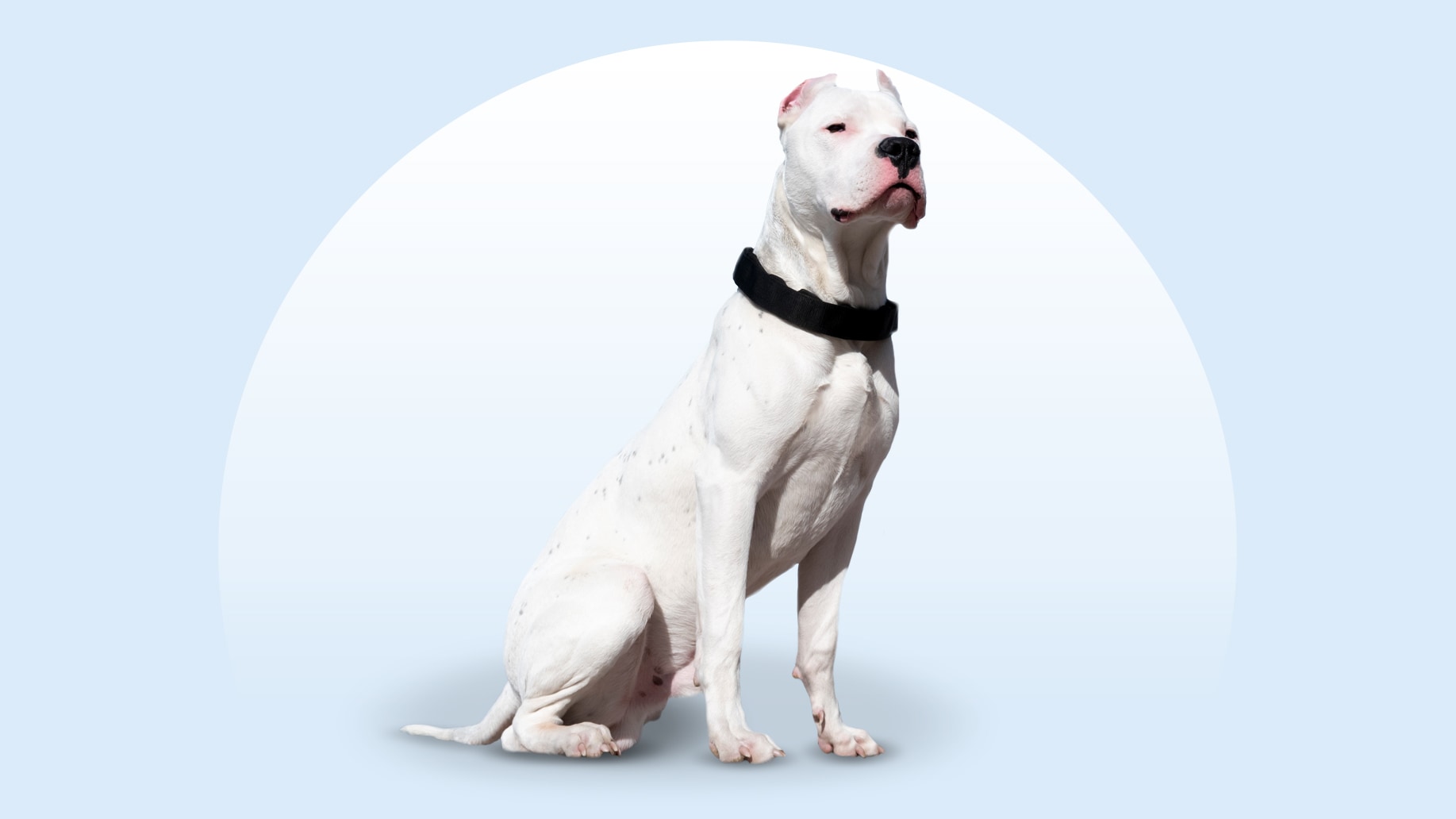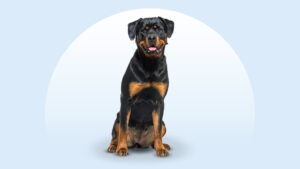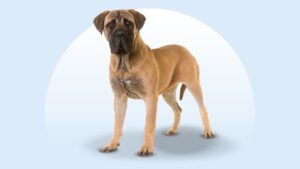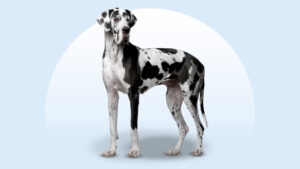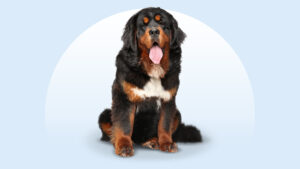Dogo Argentino
Updated December 15, 2025
Dogo Argentino
Updated December 15, 2025
If you’re looking for a reason to get out and about more, the Dogo Argentino might be your perfect pup. This bright, loyal dog needs an experienced pet parent who can embrace adventure and allow them to show off their big, energetic spirit.
Adventurous, Athletic, Loyal
88–100 pounds
24–26.5 inches
9–15 years
White
Ever seen one of those short-haired white dogs with the beautiful black patch over their eye? If they were nearly as big as their person, it was probably a Dogo Argentino.
These energetic pups can be all white, too (just like a Maltese), but they’re the opposite of a lap dog. First off, at 90 pounds or more, they’re too delightfully large. But more importantly, they have no time for dillydallying when there’s so much to see (and do!) in the world.
These agile dogs need a lot of exercise and play, and if you offer them fun activities with lots of surprises thrown in (a fun trip to the lake, maybe?), they’ll return the love and loyalty in spades.
Dogo Argentino Characteristics
Dogo Argentino Appearance
If the Dogo Argentino looks a bit serious at first, it’s probably just because they’re alert and planning their next adventure.
These short-coated pups sometimes have a large black patch around one eye, and the Dogo Argentino size, along with their agility, is their greatest feature. They can be over 100 pounds, after all.
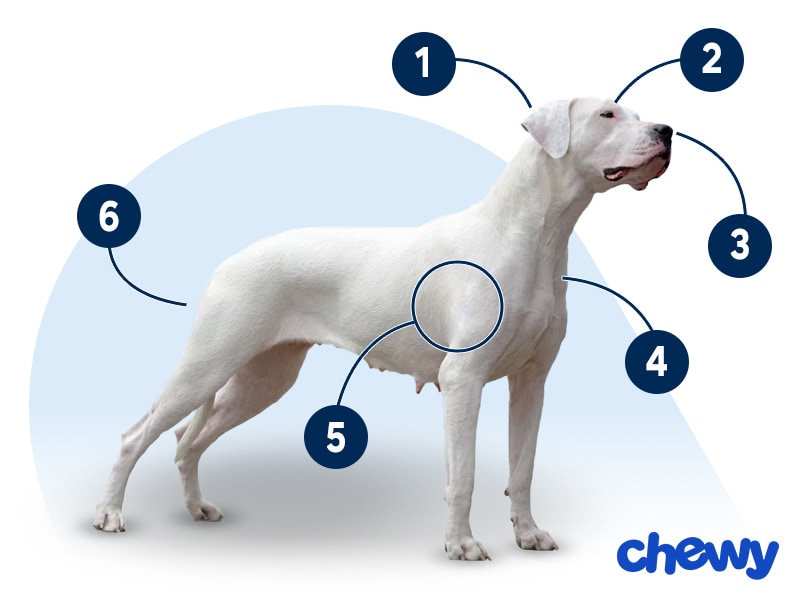
- Ears
While it was once common to crop ears, nowadays it’s better to leave them as nature intended: floppy. Many groups, including the American Veterinary Medical Association, oppose ear cropping, and many countries as well as U.S. states have banned the practice.
- Eyes
The Dogo Argentino's eyes are dark or hazelnut, and they’re almond-shaped.
- Nose
Their noses are black.
- Coat Length
The Dogo Argentino is a short-coated dog with smooth fur.
- Coat Color
Their coats are all white, though some may sport a black spot over one eye or flecked spots on their ears.
- Tail
The tail is medium-length and tapered, and it hangs down naturally at rest.
Dogo Argentino Temperament
The Dogo Argentino breed is athletic and has an energy level to match. These dogs were built for speed, and their love of activity and exercise is one of their most admirable qualities.
But so is their love for their favorite person—that’s you. Dogo Argentinos are loyal to a fault, and they’d do anything to keep you out of harm’s way. But don’t fall for the tough guy (or gal) exterior—these pups have a mushy side, too.
They’re fun, energetic, and fearless, which is why they need a dedicated pet parent to properly train and socialize them so that they can live their best life. It’s not unusual to see them getting along famously with guests or enjoying a fun game of hide-and-seek with their family.
Dogo Argentinos do have a mind of their own, and instinct might take over if they see a squirrel they’d love to chase up a tree. That’s why these active, determined dogs need a skilled pet parent who can show them that it’s OK to chill sometimes (as long as the day’s energy has been expended).
How to Care for a Dogo Argentino
Dogo Argentinos don’t need a ton of time in front of a mirror fussing over their appearance, but they do need a dedicated pet parent who can show them the ropes when it comes to obedience training, socialization, and exercise.
Grooming
Training
Diet
Exercise
Environment
Dogo Argentino Health
The typical Dogo Argentino lifespan is 9–15 years. Here are a few health issues to be aware of.
- Congenital deafness: Dogo Argentinos may have congenital deafness in one or both ears. One study found that partial or total deafness affected as many as 25% of Dogos. This condition was often more prevalent in blue-eyed dogs and those who were all white, without a color patch. Take heart, though, as most deaf dogs acclimate well and lead a full, happy life.
- Hip dysplasia: Hip dysplasia is when the ball and socket of the hip and thigh bones doesn’t properly fit. It’s an inherited condition that can be made worse if a pup is overweight, and it eventually leads to arthritis and pain. More severe cases may require surgery, but the condition is often treated with medications, joint supplements, special diets, weight management, and/or physical therapy.
- Hypothyroidism: Common in Dogo Argentinos, hypothyroidism includes symptoms like lethargy, hair loss, skin and ear infections, and weight gain. A blood test can diagnosis it, and treatment is a daily oral medication.
- Skin issues and allergies: The Dogo Argentino’s short white coat makes them more sensitive to sunburn. The breed can also experience skin sensitivities from allergies (both food and seasonal) or underlying health conditions. Get any excessive itching or redness and rashes checked by a vet.
Dogo Argentino History
The Dogo Argentino’s origins are relatively recent—they were first bred in 1928 in Argentina.
They descend from a bunch of breeds, including the Great Dane, Pointer, Bull Terrier, Boxer, English Bulldog, Pyrenean Mastiff, Irish Wolfhound, Spanish Mastiff, and a local dog native to the Córdoba province. Initially used as hunting dogs, most Dogo Argentinos now lives as pampered pets who expend their energy in the great outdoors and in dog sports.
The Dogo Argentino Club of America formed in 1985, and the Dogo joined the ranks of the American Kennel Club in 2020.
Dogo Argentino breeders charge upwards of $1,000 for a puppy. If you choose this route, pick a responsible breeder.
You can also adopt a Dogo Argentino through a rescue like DC Dogos, as there are many patiently waiting for their forever homes. You can also keep an eye out at your local animal shelter or search Chewy’s database of adoptable dogs in your area.
